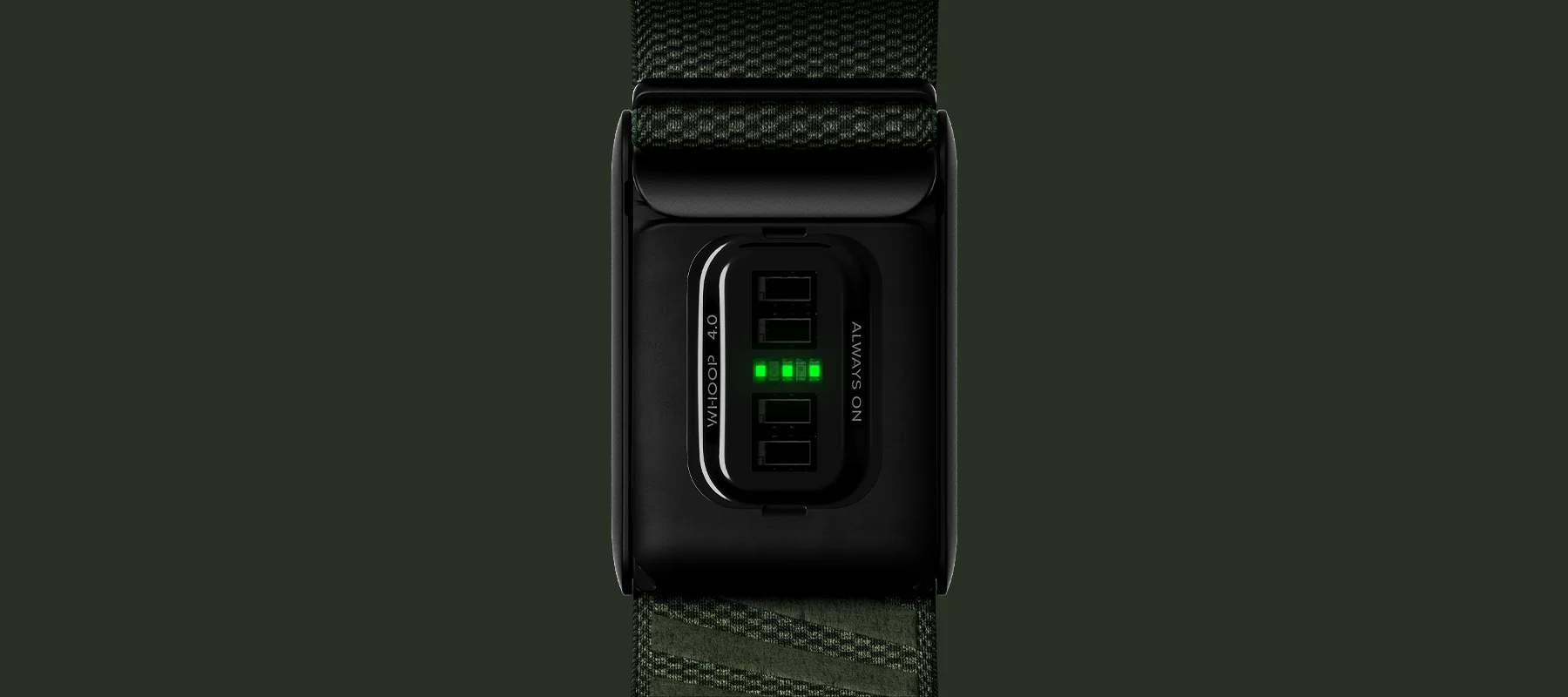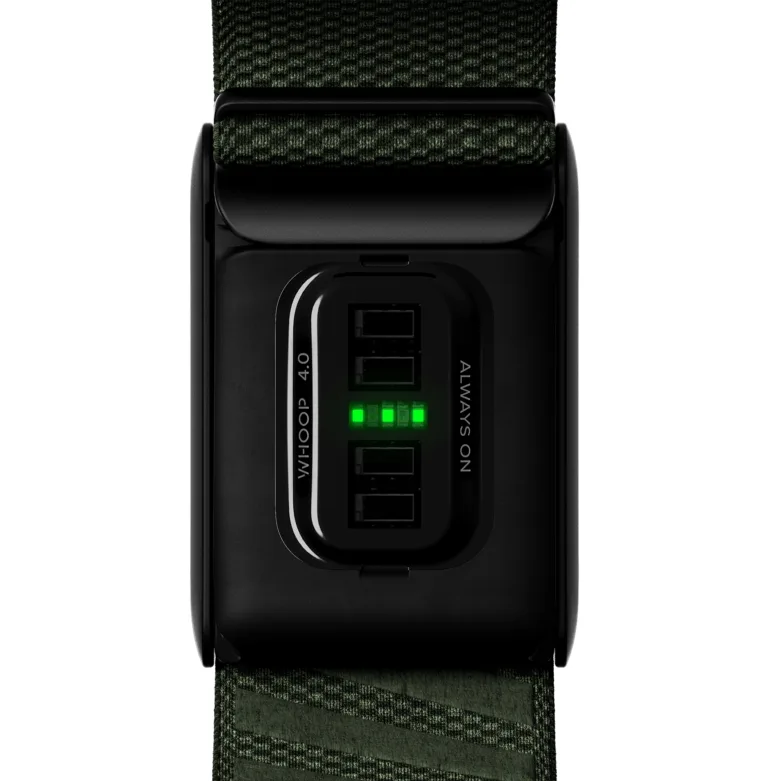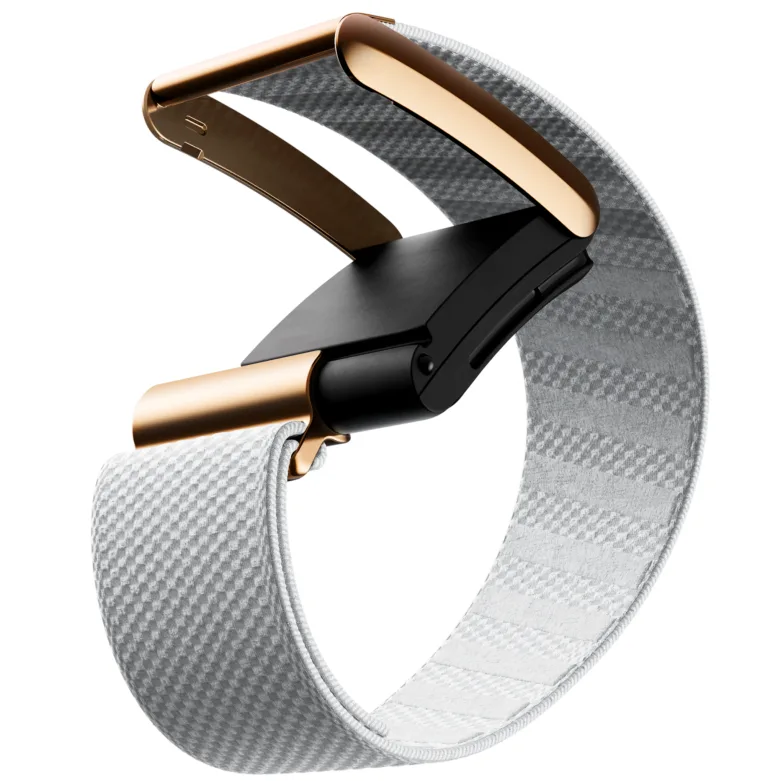Topics
- Article
- App & Features
Former Chief Technology Officer on Improved Accuracy & Design with WHOOP 4.0

A look inside the technological innovations and design behind creating the WHOOP 4.0.
We are very excited to share the amazing technology we have been working on for over 2 years: The WHOOP 4.0. For both existing members and new members, I’d like to provide with more of the details on the innovations inside and the design thinking that went into building the WHOOP 4.0. As with all products and features we make at WHOOP, our members and the feedback they provide form the core of our research and development. There are 5 central themes that emerged from this feedback that we focussed heavily on with the WHOOP 4.0: 1. Continue to improve the excellent heart rate measurement accuracy of the WHOOP sensor 2. Reduce the size of the WHOOP to allow it to fit better on more wrist sizes and improve the aesthetics of the device 3. Allow members to change bands quickly and easily and simplify the process of finding the right tightness (and saving it that way) 4. Improve the durability of the battery pack and make it water resistant 5. Make the user experience (UX) of the hardware easier to understand
New Sensor and Improved Heart Rate Accuracy
Measuring a member’s physiology continuously, 24/7, with high accuracy and reliability is the top priority of our world-class signal processing team. With the WHOOP 4.0, we revisited our sensor configuration to further increase the signal quality and open the doors to more complicated signal processing techniques. This enabled us to elevate and refine our ability to measure a member’s heart rate and heart rate variability. As one can see from the sensor, there are marked differences from the 3.0 to the 4.0--namely the inclusion of 4 photodiodes, or light sensors, (compared to 1 in the 3.0), 3 green LEDs (vs 2 in the 3.0) and the addition of both an infrared and red LED. Additionally, the arrangement of the sensors and emitters has also changed. These modifications are not random, but rather the result of over 9 years of direct study and 2 years of focused effort on improving the WHOOP sensor. Over 70 different prototype configurations were developed in the process of making WHOOP 4.0, with each prototype informed by theoretical models and simulations and also backed by benchtop and empirical studies on human participants. The results obtained are directly tied to the investment we’ve made in WHOOP Labs, which allowed us to make improvements by studying the properties of the signal quality on over 4,000 unique individuals generating over 20,000 data sets and 50 million heart beats! It is critical that WHOOP works on everyone, no matter the skin tone, anatomy of the wrist, gender, etc. Diversity in study participants was essential to ensure optimal performance in all conditions. The final sensor configuration that produced the best results can be seen here:

THE WHOOP 4.0 SENSOR HAS 5 LEDS (3 green, 1 red, 1 infrared) AND 4 PHOTODIODES.
Taking advantage of the expanded sensor capabilities and the huge dataset, our signal processing team developed new cutting-edge algorithms to boost the accuracy of our heart rate measurements. Compared to the WHOOP 3.0, the WHOOP 4.0 on average has a 10% improvement in accuracy across all activities we studied. This marks just the beginning of what is capable with our new sensing system. Throughout the life of WHOOP 4.0, we will continue collecting data sets through WHOOP Labs and increasing the heart rate accuracy. These updates will come as firmware updates (where we can upgrade your hardwear while it’s on your wrist) alongside other improvements and new features to your WHOOP 4.0.
Smaller Size
To better accommodate feedback from our growing member base and also advance the innovative design of the WHOOP sensor, we knew we needed to make the WHOOP 4.0 smaller than its predecessors. Reducing the size of the WHOOP 3.0 was a daunting task, and we made it even more ambitious by including over 100 additional components on the circuit boards. This allowed us to introduce new features such as SpO2 monitoring and skin temperature sensing, as well as a haptics engine, a relatively large component. By pushing the boundaries of electrical engineering and printed circuit board design, along with innovative mechanical engineering to maximize the use of internal space, our team was able to cut down the size of the WHOOP 4.0 by 33% compared to the WHOOP 3.0. The end result is a sleek device that fits comfortably on wrists of all sizes.
Next-Generation Battery
Making wearables smaller often means decreasing battery life since batteries tend to be the largest component by volume. However, this was something we were determined to avoid. WHOOP is always on the lookout for innovative partners that are developing next-generation technology. We knew that finding a partner to help us deliver more energy, so we could power our devices with more features, sensors, and components without compromising on form factor or battery life, would be essential. More than two years ago, we found Sila Nanotechnologies and were inspired by their mission to develop the first major innovation in battery energy improvements in over 30 years. Both companies saw the promise of each other's technologies and a natural synergy. We are proud that WHOOP 4.0 is the first product in the world to be powered by Sila’s new silicon-anode chemistry, which allows for a smaller battery than WHOOP 3.0 but with a much higher energy density--meaning we did not have to sacrifice battery life.
The Fast Link™ Slider and WHOOP Body
Along with the mechanical changes to facilitate the decrease in size, WHOOP developed an innovative design and system to allow members to swap between their favorite bands in a much quicker manner. The Fast Link slider lets members find the optimal tightness of their band and never have to re-thread it when changing to another one.

THE WHOOP 4.0 FEATURES A FAST LINK SLIDER TO EASILY REMOVE the band FROM THE SENSOR.
The decrease in size and Fast Link system opened up a revolution in wearable technology--truly making wearables wearable throughout the body. The WHOOP 4.0 can easily be worn all over the body with our new apparel line, WHOOP Body. The first collection allows you to place the sensor in boxers, bras, shorts, performance leggings, and shirts, and we will continue researching and developing more sophisticated smart garments.
Waterproof Charger
Another frequent piece of feedback we received was that the battery pack needed to be water resistant. Forgetting to take it off when getting in the shower or jumping in a pool was an all too common occurrence for WHOOP members (and members of our team too). The major challenge in waterproofing the battery pack was the contact points that allowed charging to happen between it and the device. These are intricate electro-mechanical structures which have additional complexity due to the sliding nature of how it attaches. The solution we found was to enable the battery pack to charge the device wirelessly, thus removing the need for those contacts. In fact, we were able to achieve the same IP rating (IP 68) for dust proofness and water-resistance for the battery pack as for the WHOOP 4.0 sensor. The battery pack itself charges over USB-C and a cable is included when you upgrade or buy a WHOOP 4.0.
Simpler User Experience
Finally, the UX for understanding the state of charge and various operating states of the battery pack and sensor were oftentimes confusing with WHOOP 3.0. We overhauled this system by using RGB LEDs and a simpler green, yellow, and red system for understanding state of charge. Furthermore, the 4.0 battery pack was upgraded to include an accelerometer with the ability to track double taps and allow members to check on the charge of the battery pack on its own. A detailed breakdown of the states can be found here on our support page.
...And More
While we’ve covered a lot on the hardware upgrades to WHOOP 4.0, this is just the tip of the iceberg. We also included new sensors to measure pulse oximetry and skin temperature, improvements to the Bluetooth Low Energy antenna for more reliable connections, and more. As always, we look forward to continuing to develop features on this revolutionary new platform!